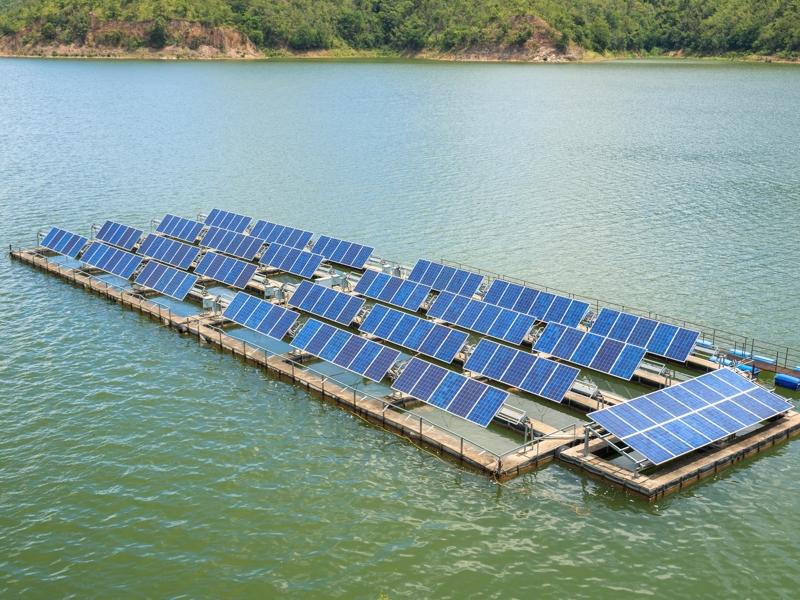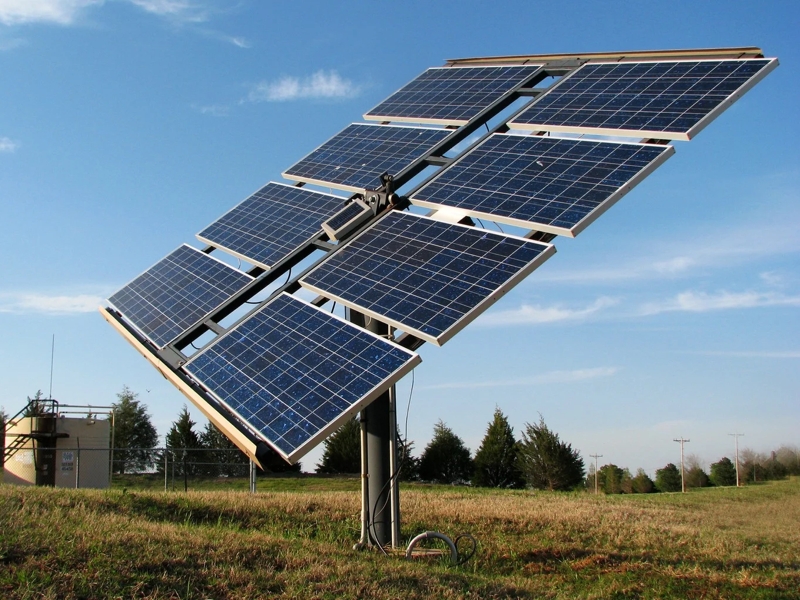The rapid development of solar energy throughout the world has provoked great interest in this area in our country. The policy of state support over the past 10 years has made it possible to launch the photovoltaic industry in Ukraine and reach large volumes in terms of the total installed capacity. So, at the beginning of 2021, almost 7 GW of solar power plants were installed throughout the territory of Ukraine. Moreover, the share of large commercial PV systems accounted for about 89% of this capacity.
Solar energy technologies are constantly evolving and improving. The solutions that are being deployed and operated to generate clean solar electricity come in many configurations and differences. In this article, we will briefly review the most popular types of solar power plants (photovoltaic systems) and offer our own version of their classification. We will only touch on those solar power plants based on the principle of direct photovoltaic conversion of solar radiation energy into electrical energy, and we will not discuss other technologies such as concentrator solar power plants (tower, dish, parabolic, based on the Stirling engine), thermal solar collectors and many other.
According to the method of placing solar modules, all photovoltaic systems are divided into the following types:
- Ground-based solar power plants
- Rooftop solar power plants (located on flat, pitched and other types of roofs)
- Facade solar power plants
- BIPV solar power plants
- Solar carports
- Floating solar power plants
- Mobile (or portable) solar power plants
Until the end of 2020, ground-based solar power plants were mainly built in Ukraine with the installation of photovoltaic modules by a fixed angle, which allows obtaining the highest power generation during a year. Recently, due to changes in the regulatory norms and legislation in our country, rooftop solar power plants are becoming more popular. Particularly promising is the segment of commercial rooftop solar power plants used to replace part of their electricity consumption by enterprises from different business areas.

Another one classification of solar systems is by possibility to use sun tracking devices:
- Stationary solar power plants with solar panels located on fixed support structures
- Solar power plants that can track direction to the sun, mounted on single-axis solar trackers with a changeable tilt angle (the position of solar PV modules is adjusted automatically or mechanically several times a season)
- Solar power plants tracking the sun’s position, mounted on single-axis “east-west” solar trackers (the angle of solar PV modules is automatically adjusted during daylight hours)
- Solar power plants tracking the sun on biaxial solar trackers (the angle of inclination and azimuth of solar PV modules is adjusted automatically during a whole day)

According to the possibilities of working in parallel with power grids, all photovoltaic systems are divided into the following types:
- On-grid solar PV power plants (can be built using both string and central solar inverters)
- Off-grid solar power plants with AC output
- Off-grid solar power plants with DC output
- Hybrid and backup solar power plants
- Solar-diesel hybrid PV power plants
The most widespread on-grid solar PV power plants, which can both operate on the electrical supply into 0.4 kV internal grid without overflow of electrical power to the external grid, and transmit all the generated energy in the grid with a higher voltage. The first case refers to solar power plants integrated into the internal power grids of buildings and structures and working to meet their own electricity needs. In the second case, we are talking about the sale of generated electricity to other consumers. In this case, the generation of electricity using solar panels is most often geographically separated from consumption, and additional transportation is required (usually, with voltage transformation to minimize energy losses).
By the type of the main technology used for converting solar irradiation into electricity, photovoltaic systems are divided into:
- Crystalline silicon solar power plants (the most common are solutions based on monocrystalline and polycrystalline silicon solar modules)
- Solar PV power plants on amorphous silicon
- Thin-film solar power plants based on CdTe technology
Depending on the design of solar panels, the following systems are distinguished:
- Regular solar power plants (rooftop and ground)
- Bifacial solar power plant
- Transparent or semi-transparent solar power plants (most often used as BIPV solutions)

By the type of application, photovoltaic systems are divided into:
- Home solar power plants for private households
- Commercial solar power plants
Depending on the method of subsequent use of the generated electricity, photovoltaic systems are divided into:
- Solar power plants for the sale of electricity by a “green” tariff (depending on the specifics of local legislation, it can be all generated energy or just the difference between generated and consumed electricity)
- Solar power plants for the sale of generated electricity using an auction system
- Solar power plants that generate electricity for their own consumption without selling it to the grid
- Balancing solar power plants (e.g. with BESS)
At the end, all commercial photovoltaic systems are divided into the following types by application:
- Solar power plants for industrial enterprises
- Solar power plants for agricultural enterprises
- Solar power plants for logistics enterprises
- Solar power plants for shopping and entertainment centers
- Solar power plants for restaurants
- Solar power plants for hotels
- Solar power plants for offices
- Solar power plants for residential buildings
- Solar power plants for vehicle service stations and gas stations
- Solar power plants for greenhouses
Solar panels are widely used in industry, agriculture, trade, and many other areas of the economy, as well as in the private sector. Solar technology will be making it possible to generate cheap and clean electricity and significantly reduce recurring utility bills for many next years. The return on investment in a solar power plant depends on various factors, the most important of which is the market value of electricity generated using conventional non-renewable energy sources. Every year the attractiveness of the investments to a solar PV power plant is growing, and the payback period is decreasing.
Construction of solar power plants
Contacting Avenston, you can order the construction of your solar power plant of any type, capacity, and functional purpose. We have been working since 2010 and have extensive practical experience in the design, construction, and maintenance of all types of solar power plants (“Portfolio of completed projects“). The specialists of our company will provide you with qualified consultations and the necessary assistance, starting from the stage of project planning. At Avenston you will also receive maximum technical expertise and full support during the engineering, construction, and operation of your solar power plant.